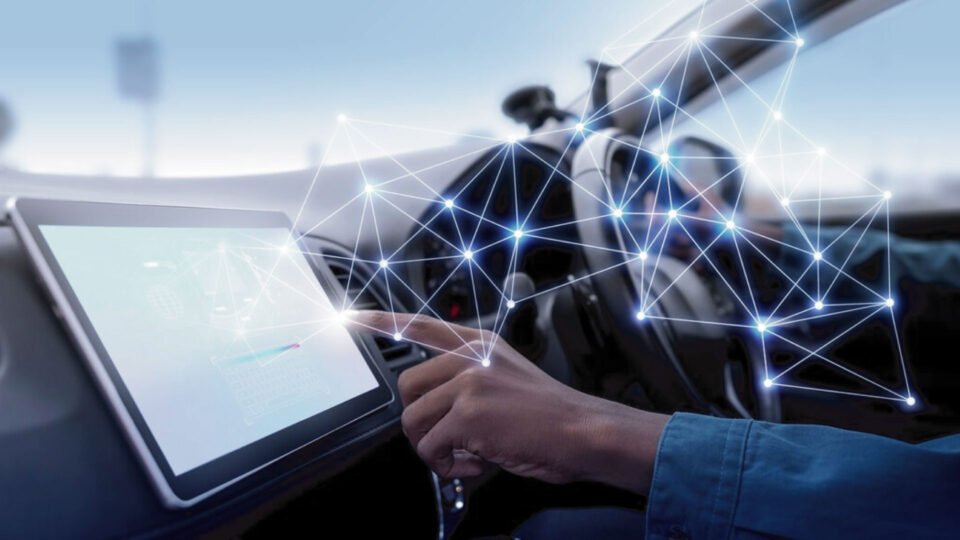Explore the future challenges of Artificial Intelligence (AI) through the lens of Autonomous Vehicles (AV).
Another day, another AI headline. Meta has introduced new AI chatbots, embodied by celebrities, in a bid to mix information with entertainment. Amazon has invested up to $4B in its rival, Anthropic; and Google has launched Gemini, to compete with GPT-4. That’s just some of the AI stories within the last quarter involving three of the most influential companies in the technology sector.
Artificial Intelligence is booming. Its rapid development in 2023 has unlocked a wave of new possibilities and opportunities for the AI and machine learning ecosystem. But one of its beneficiaries isn’t. While AI stock has never been higher, we’ve not seen this optimism translate into the autonomous vehicle (AV) sector. This makes little sense. The development of AI and the future of autonomous vehicles is inextricably linked – the former quite literally powers the latter. So why is there this disparity in market confidence between the two sectors? And what does the surge in artificial intelligence mean for the AV sector as a whole?
The AV crystal ball
The challenges of AV at present are those of AI’s future. One of these big challenges revolves around data. An advanced driver assistance system (ADAS) or autonomous driving (AD) system relies on sensors (such as cameras and radar) to ‘see’ the world around them. The data these sensors collect is processed by machine learning to train an AI algorithm, which then makes decisions to control the car. However, handling, curating, annotating and refining the vast amounts of data needed to train and apply these algorithms is immensely difficult. As such, autonomous vehicles are currently pretty limited in their use cases.
AI developers outside the AV world are similarly drowning in data and how they collate and curate data sets for training is equally crucial. The issue of encoded bias resulting from skewed, low quality data is a big problem across sectors: bias against minorities has been found in hiring and loans, where in 2019 Apple’s credit card was investigated over claims its algorithm offered different credit limits for men and women. As applications of AI only continue to increase and reshape the world around us, it’s critical that the data feeding algorithms are correctly tagged and managed.
In other sectors, errors are more readily tolerated, even while bias harms. Consumers may not mind the odd mistake here and there when they enlist the help of ChatGPT, and even find these lapses amusing, but this leniency won’t last long. As reliance on new AI tools increases, and concern over its power grows, ensuring applications meet consumer expectations will be increasingly important. The pressure to close the gap between promise and performance is getting bigger as AI moves from science fiction to reality.
The importance of alignment
These questions of safety carry into AI alignment – the new focus in artificial intelligence. It’s a field of safety research that centres on aligning AI with human and societal values and looks to build a set of rules or principles which AI models can refer to when making decisions, so outcomes are in tune with human goals.
This concept of humans setting standards that AI must meet, rather than being dictated to by code, will be vital in shaping the future of both autonomous vehicles and AI as a whole. One of the reasons true self-driving cars are struggling to materialise is because there is no absolute truth with driving: driving is subjective and everyone will do it differently.
Navigating the complexity and subjectivity of driving means a new methodology is needed. Old tactics of training AI through observing human behaviour won’t work – instead, developers need to employ an outcome-based approach and first decide how they want a product to behave, then, how they will achieve this behaviour.
At the heart of this new way of working is an iterative approach. As an algorithm is developed it should be monitored and the evolving dataset shaped, to ensure it aligns with the predetermined product goals. Incremental progress may not grab as many headlines but it’s crucial in prioritising safety, winning consumer trust and marrying expectation with end results. And there are more immediate economic wins to be gained, too, as iterative processes can help AV manufacturers cut costs.
The future of AI and autonomous vehicles is intertwined, although their current narratives might say otherwise. AI developers across the field should look to the AV industry as a foreshadowing of the challenges looming in their own future, and preemptively correct course. Aligned development and iterative working will be the way autonomous vehicles, and artificial intelligence as a whole, reach their desired destination.
Explore AITechPark for top AI, IoT, Cybersecurity advancements, And amplify your reach through guest posts and link collaboration.

